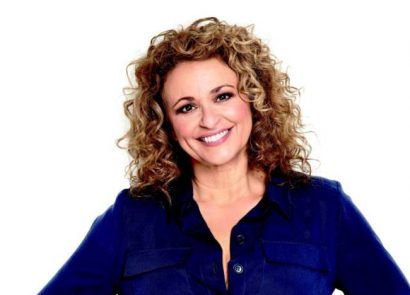Breast cancer affects one in eight women, so it’s reasonable to be concerned if you notice a lump. The good news is that many lumps are not cancererous. The bad news is, that it sometimes takes multiple imaging tests and a biopsy (surgical removal of a small piece of breast tissue) to figure that out. You are likely familiar with the normal texture of your breasts, and even if you’re not performing regular checks, you may notice a lump or a change in the shape of one breast. If you do, what should happen next? Wait a week for an appointment with your doctor, or try to get an emergency mammogram? Here, Timothy Ryntz, M.D., gives us his advice on what we should be looking out for, and provides his guidance on the next steps.
Take a chill pill
You injured your breast and now have a lump beneath a visible bruise. If you’ve bruised your breast, you may have a lump-like collection of blood beneath the surface. The key is to track the lump over the following week as the bruise fades. If the lump doesn’t get smaller, check in with your doctor. Sometimes breast injury causes a phenomenon known as fat necrosis, in which damaged breast fat becomes solid. Unfortunately, further testing is often required to prove it isn’t malignant. After all, it’s possible that by sheer coincidence you could have a tumor in the exact area that was injured.
Your breasts hurt and have a lumpy texture during your period. Like many women, you likely have numerous small cysts (fluid-filled areas) in your breasts that swell and become painful during your period. The tip-off is the fact that both breasts are affected and feel lumpy all over. Any really large or persistent lumps may require further evaluation with a breast ultrasound.
Make an appointment
You have a painful, red lump near your nipple. You may have a breast infection, known as mastitis, which usually occurs in women who are breastfeeding. In some cases, the infection can produce a solid ball of bacteria and immune cells known as an abscess. The treatment is antibiotics and drainage of the abscess, if large enough. Sometimes the symptoms of nipple infection don’t improve with antibiotics and are actually an early sign of breast cancer known as Paget disease of the breast. Your doctor may perform further testing to check for this diagnosis.
You have a lump that doesn’t match any of the previous descriptions, but you otherwise feel fine. Try to see your doctor in the next few days. Depending on your age and the overall consistency of your breasts, you likely need either a breast ultrasound or mammogram (possibly both). If those tests can’t prove beyond a reasonable doubt that the lump is nothing to fear, your doctor will schedule a biopsy. Don’t go to A&E just to check out a lump; mammograms aren’t performed there and you’ll be sent right back to your regular doctor.
Get to a&e
You have a red, swollen, painful breast along with fevers, chills, and/or lightheadedness. You may have a severe case of mastitis that requires urgent attention, possibly with intravenous fluids and antibiotics. If you can’t see your doctor within the next few hours, head to A&E.
How to check your breasts
You can check in any way that feels comfortable for you – in the shower, when you’re in bed or in the mirror. However you want to check, the experts at breast cancer charity CoppaFeel! (coppafeel.org) have some handy pointers to help:
Examine regularly
“We believe boob checking should be a monthly habit, so that you’ll notice any unusual changes quickly. By checking on a regular basis, you’ll also learn what’s normal for you each month. Everyone has to start somewhere, so don’t worry if you’re not feeling confident straight away.”
Know what’s normal for you
“Being breast-aware simply means knowing what is normal for your boobs or pecs. If you have periods, it’s likely you’ll find that your breasts will naturally change as part of your cycle each month. It is important to get to know the normal rhythm of your boobs so you will be able to detect anything unusual quickly.”
Look and feel
“Many of the signs and symptoms of breast cancer are changes you would only notice by looking and feeling your boobs.”
Remember your collarbone and armpits
“Breast tissue isn’t only found in your boobs. It reaches all the way up to your collarbone and underneath your armpit, so check this whole area each time. This is the same for both men and women.”
If in doubt, get it checked out
“Your doctor is the only person who can refer you for further examination, so visit your GP after a week of monitoring the symptom if it doesn’t go away.”
Learn the signs of breast cancer
“Breast cancer doesn’t just show up as a lump so getting to know all the symptoms will help you detect anything suspect, quickly. Remember that some of these changes might occur naturally with your cycle and can be perfectly normal.”
These signs and symptoms include:
- Changes in skin texture, e.g. puckering or dimpling
- Lumps and thickening
- Nipple discharge
- Nipple inversion and changes in direction
- Swelling in your armpit or around your collarbone
- Constant, unusual pain in your breast or armpit
- A sudden, unusual change in size or shape
- A rash or crusting of the nipple or surrounding area
How often do you need a mammogram?
Mammograms remain the subject of heated debate. Some professional medical organisations recommend they begin at age 40 and get repeated every year. Others recommend they begin at age 50 (earlier if there is a family history of breast cancer) and get repeated every other year.
What could possibly be the downside of earlier and more frequent testing? Isn’t it always better to stay on top of things? Unfortunately, mammograms aren’t a perfect screening test. They can’t always clearly show if a lump is or isn’t cancer, and as a result, an abnormal mammogram frequently results in a biopsy. Also, a mammogram itself isn’t exactly a walk in the park, as it requires your breasts to get sandwiched between two sheets of hard plastic. As a result, even though earlier and more frequent mammograms will detect cancers sooner, they also dramatically increase the likelihood of finding non-cancers that wouldn’t otherwise have been noticed or caused problems. You and your doctor will have to decide on the schedule that best suits your attitude and wishes.
From the book AM I DYING?!: A Complete Guide to Your Symptoms – and What to Do Next by Christopher Kelly, M.D., M.S. and Marc Eisenberg, M.D., F.A.C.C. Copyright 2019 by Christopher Kelly, M.D., M.S., and Marc Eisenberg, M.D., F.A.C.C. Reprinted by permission of William Morrow, an imprint of HarperCollins Publishers.




















